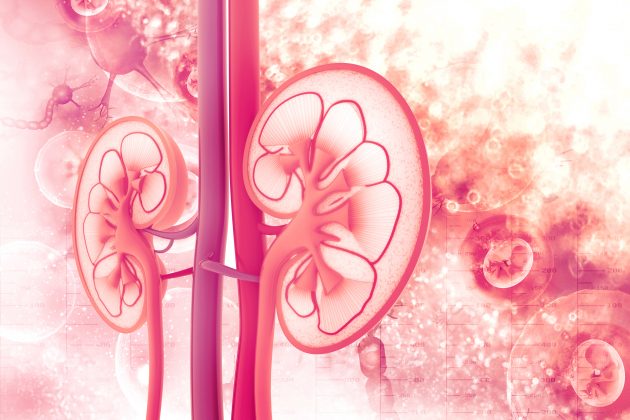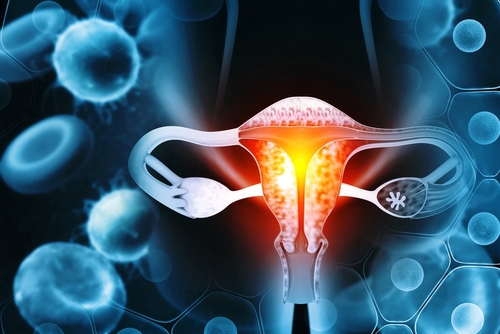Patients with severe acute kidney injury (AKI), defined as AKI that requires dialysis (AKI-D), have increased risk of adverse outcomes, incidence of kidney failure, in-hospital mortality, and high healthcare costs. In recent years, the incidence of AKI-D has increased worldwide, due, in large part, to the aging population and the increasing burden of acute and chronic diseases. However, there are some data that suggest a decline in morality rates associated with AKI-D.
The most common cause of kidney failure is diabetes, accounting for 46% of all new cases in the United States; diabetes has also been linked to a higher risk for AKI and AKI-related mortality. The number of adults living with diabetes is expected to increase from 42.5 million in 2017 to 629 million by 2045. In addition, type 2 diabetes is increasingly being diagnosed in young adults, exposing those patients to a longer duration of disease and an increased risk for complications.
National US data reveal a significant increase in AKI-D hospitalization rates between 2000 and 2014; the absolute increases were greater in adults with diabetes. Jessica Lee Harding, PhD, and colleagues conducted a cross-sectional study designed to examine three areas: (1) the current trends in the annual incidence of AKI-D hospitalizations among adults with versus without diabetes by age and sex; (2) differences in the trends in in-hospital mortality associated with AKI-D between people with and without diabetes by age and sex: and (3) the comorbid conditions associations with the increase in AKI-D in adults with and without diabetes. Results were reported in the American Journal of Kidney Diseases [2020;75(6):897-907].
The study utilized nationally representative data from the National Inpatient Sample and the National Health Interview Survey to generate 16 cross-sectional samples of US adults ≥18 years of age between 2000 and 2015. The study exposure was diabetes, defined using International Classification of Diseases, Ninth Revision, Clinical Modification (ICD-9-CM) codes. The outcome of interest was AKI-D, defined using ICD-9-CM codes.
In adults with diabetes, the rates of AKI-D increased 55.7% during the study period from 26.4 to 41.1 per 100,000 persons (change per year, 3.3%; P<.001). In the cohort without diabetes, the rates increased 71.8% between 2000 and 2009 from 4.8 to 8.3 per 100,000 persons (change per year, 6.5%; P<.001); the increase plateaued after 2009. In 2015, the rates of hospitalization for AKI-D remained nearly five times as high in adults with diabetes compared with those without diabetes (rate ratio, 5.0; 95% confidence interval, 4.8-5.1); there was no significant increase in the excess risk between 2000 and 2015.
Trends in AKI-D rates were similar in men and women with and without diabetes. However, absolute rates remained higher in men than in women across all age groups. Absolute rates remained highest among older age groups, although the greatest relative increases were seen in the younger age groups (18 to 44 and 45 to 64 years of age).
During the study period, there was a decrease in in-hospital mortality associated with AKI-D, from 23.1 per 100 persons to 15.2, in adults with diabetes (change per year, –3.9%; P=.01). In the cohort without diabetes, in-hospital mortality associated with AKI-D decreased from 34.4 to 28.7 (change per year, –2.0%; P<.001). Trends were similar for men and women, although the decline among women with diabetes was not significant. There was significant decline in all age groups with the exception of those 18 to 44 years of age where there was no significant change seen in patients with and without diabetes.
Of AKI-D hospitalizations among patients with diabetes, there was no change over time in the proportion of hospitalizations with low to moderate comorbid conditions; there was an increase in the proportion of high-comorbid hospitalizations between 2000 and 2009 (change per year, 4.4%; P=.02), followed by a plateau. In the cohort without diabetes, there was a decrease in the proportion of hospitalizations with low morbidity between 2000 and 2015 (change per year, –0.8%; P<.001), which coincided with an increase in the proportion of high-morbidity hospitalizations (change per year, 1.7%; P=.007).
There were changes over time in patterns of specific comorbid conditions. In the cohort with diabetes, there were increases in the proportion of chronic pulmonary disease, liver disease (mild and moderate/severe), rheumatic disease, and kidney disease. There were declines in hypertension, myocardial infarction, congestive heart failure, and peripheral vascular disease during the study period. Throughout the study period, the proportion of men increased (from 50.6% to 57.1%; P<.001), and, after an initial period of decline, the proportion of cardiac procedures increased beginning in 2009.
In the cohort without diabetes, patterns of comorbid conditions were similar with the exception of (1) the proportion of men did not increase, (2) malignancies and hemiplegia or paraplegia increases and HIV/AIDS declined (compared with no change in the cohort with diabetes), and (3) there was no change in peripheral vascular disease (compared with declines in the cohort with diabetes).
Limitations to the study findings cited by the authors included a lack of laboratory data to corroborate the AKI diagnosis, the inability to distinguish whether AKI was acquired within the hospital or in a community setting, including all types of diabetes with the assumption that 90% to 95% had type 2 diabetes, and the inability to adjust for a number of possible confounders (race/ethnicity, body mass index, prior chronic kidney disease, smoking, and socioeconomic characteristics).
The researchers said, “In the United States between 2000 and 2015, hospitalization rates of AKI-D increased in adults with and without diabetes while AKI-D-associated mortality declined. However, AKI-D remained substantially higher in adults with versus without diabetes and this excess risk has not improved over time. Most alarmingly, relative increases in AKI-D were greatest among young adults with diabetes. Increases in AKI-D may be explained in part by increases in liver, renal, and rheumatic, but not cardiovascular, comorbid conditions. This study highlights the need for greater AKI risk factor mitigation above and beyond traditional cardiovascular preventions and management, especially in young adults with diabetes.”
Takeaway Points
- There has been substantial increase in acute kidney injury requiring dialysis (AKI-D) in the United States. Researchers conducted a cross-sectional study to examine the trends in hospitalizations in the setting of AKI-D in patients with and without diabetes.
- In the cohort with diabetes, there was an increase in AKI-D during the study period (2000-2015), with relative increases greater in younger versus older adults. There was also an increase among patients without diabetes.
- In both cohorts, there was a significant decline in AKI-D associated morality.
Credit: Original article published here.








